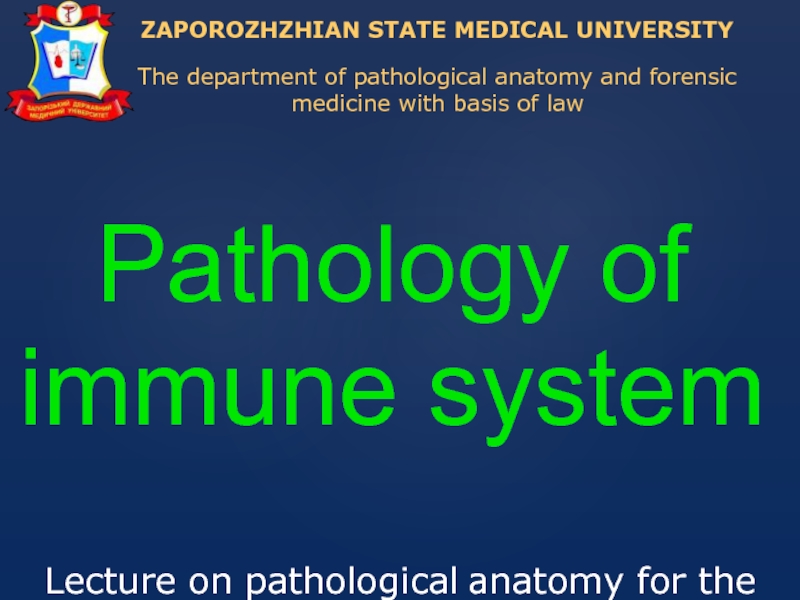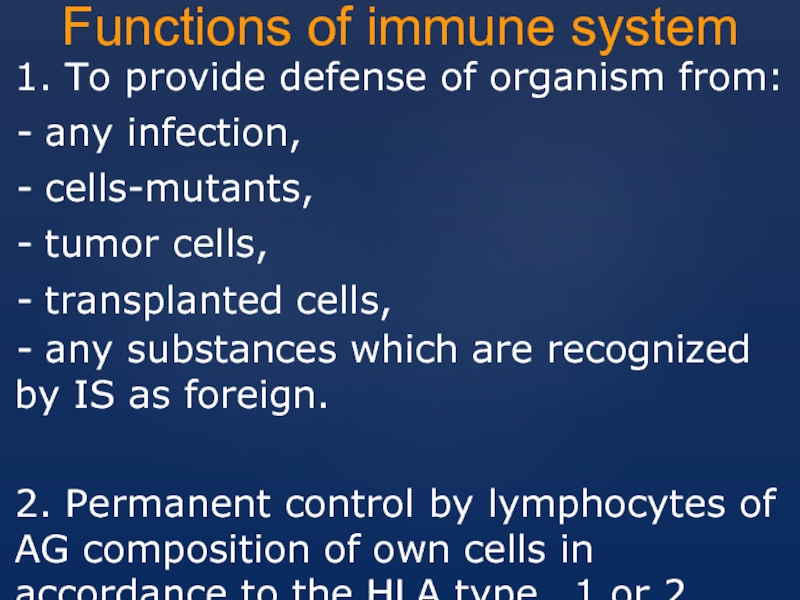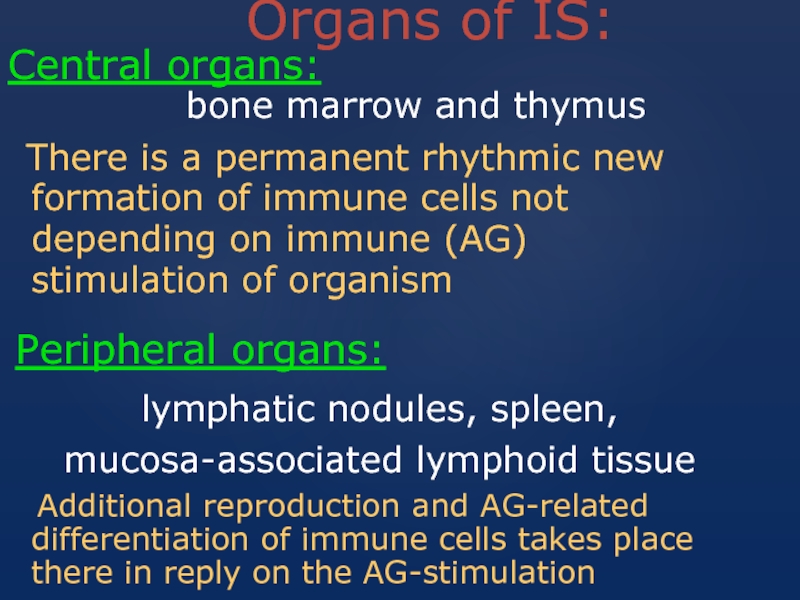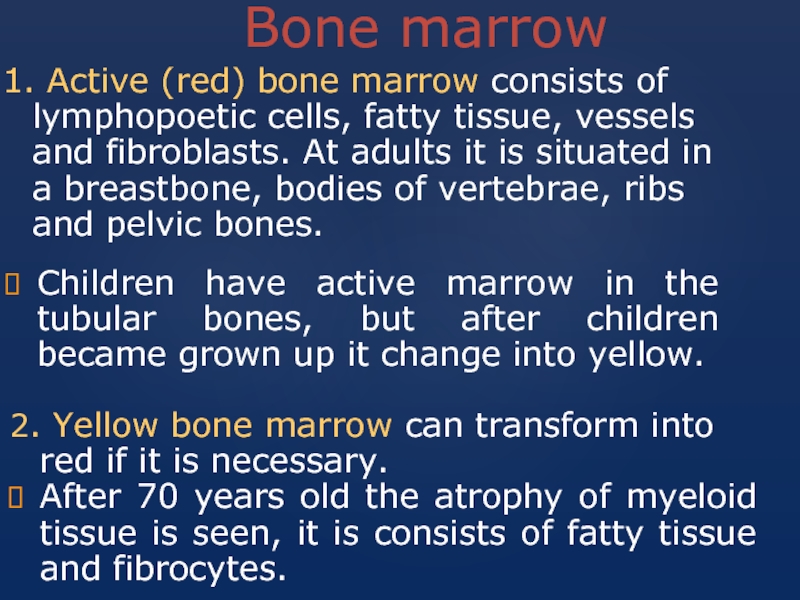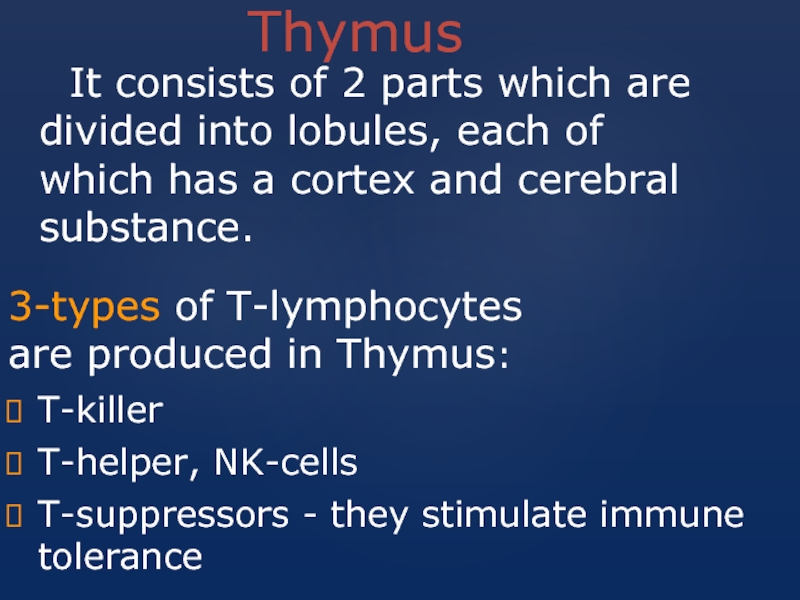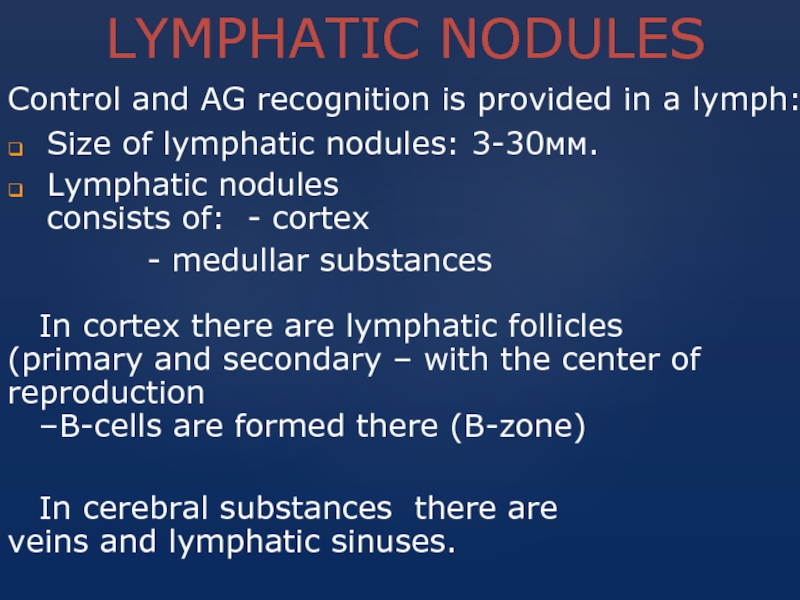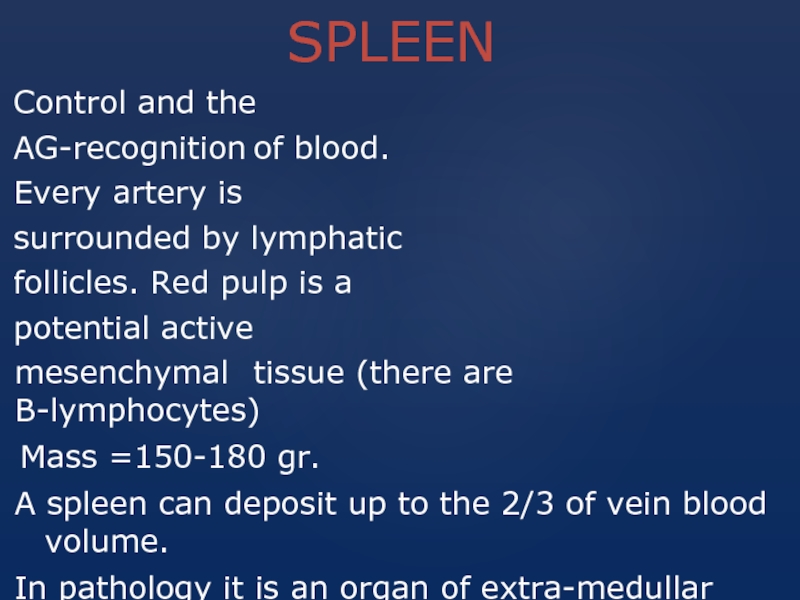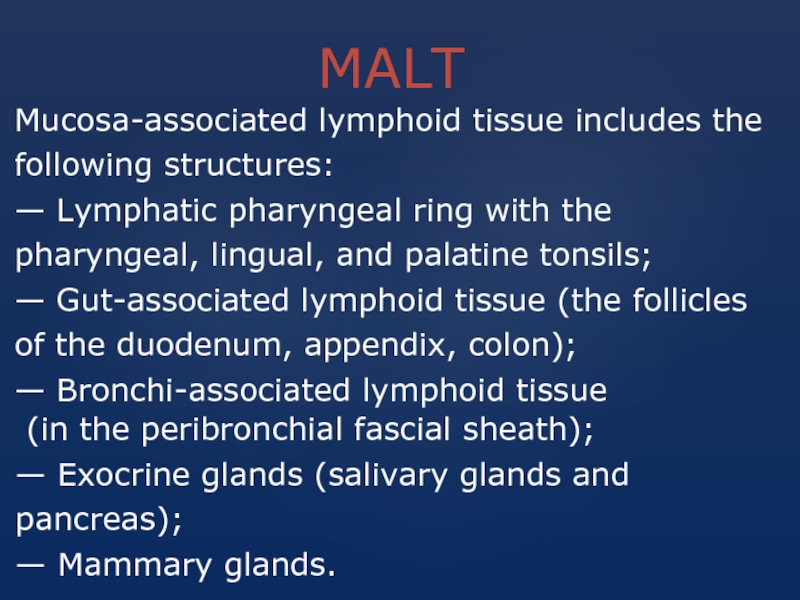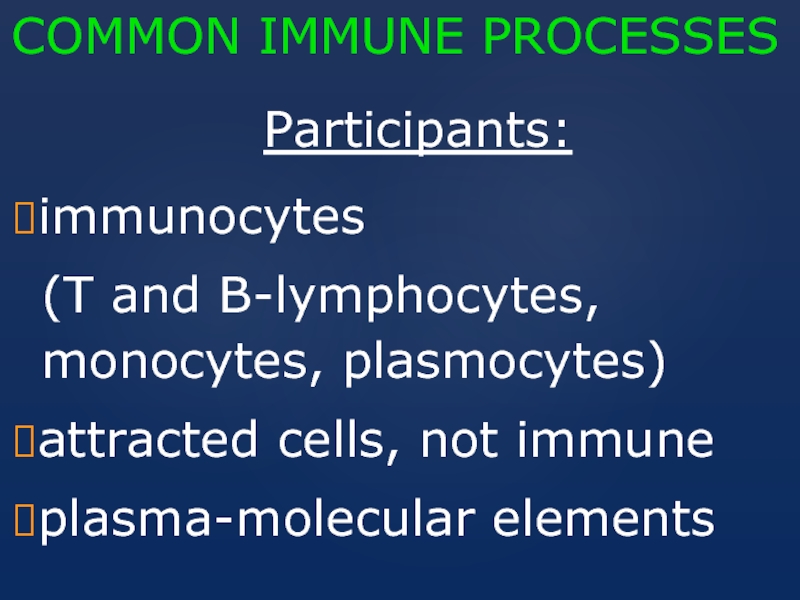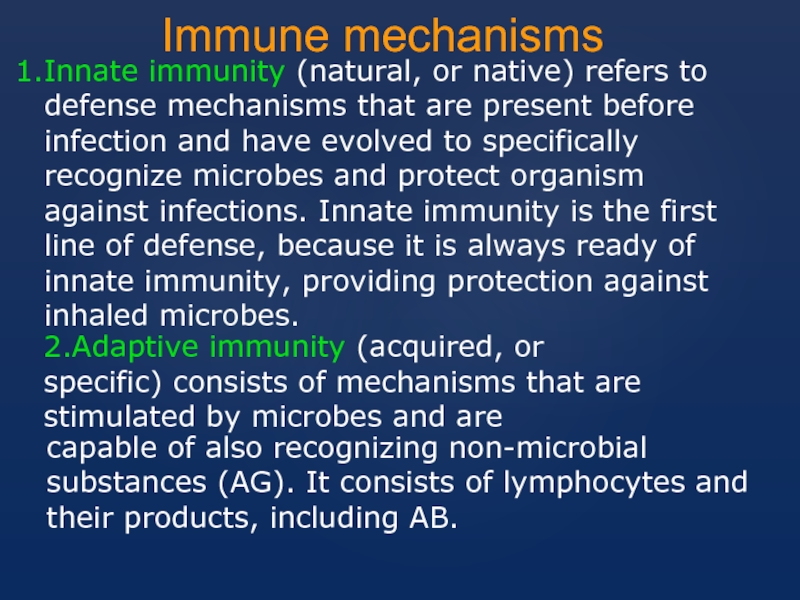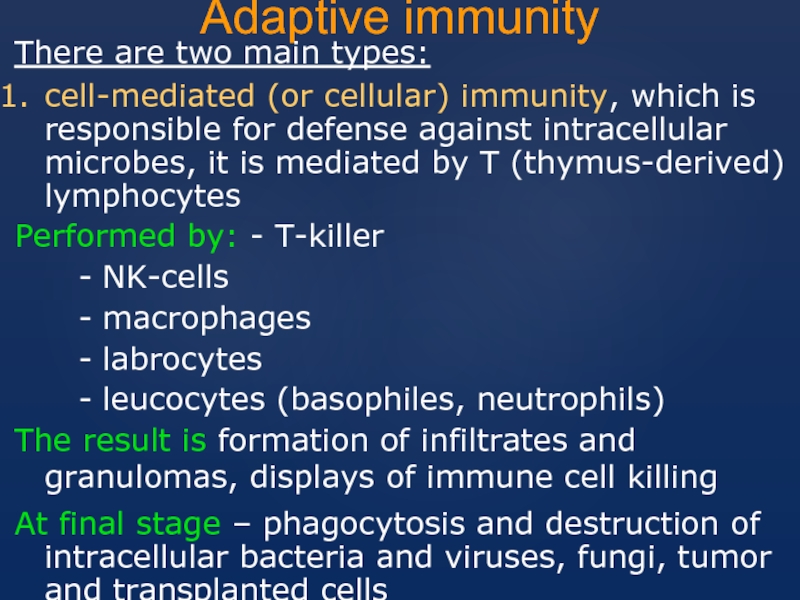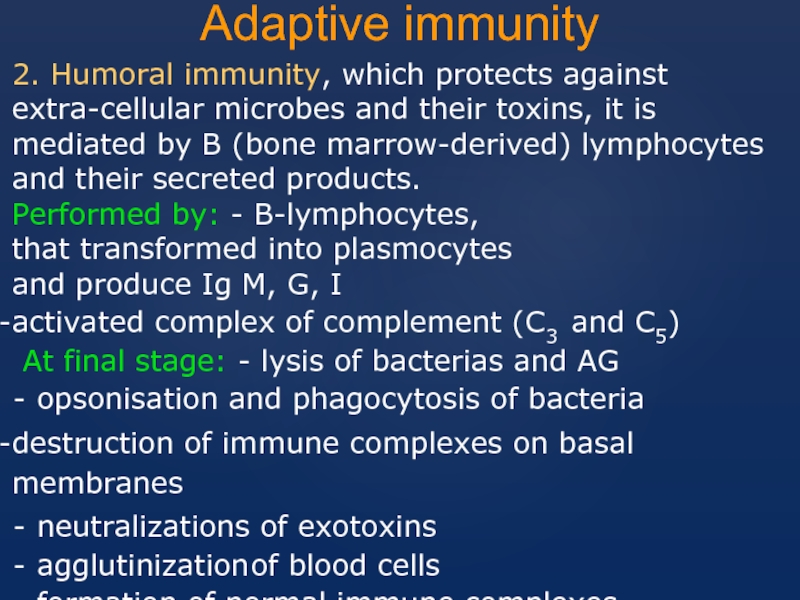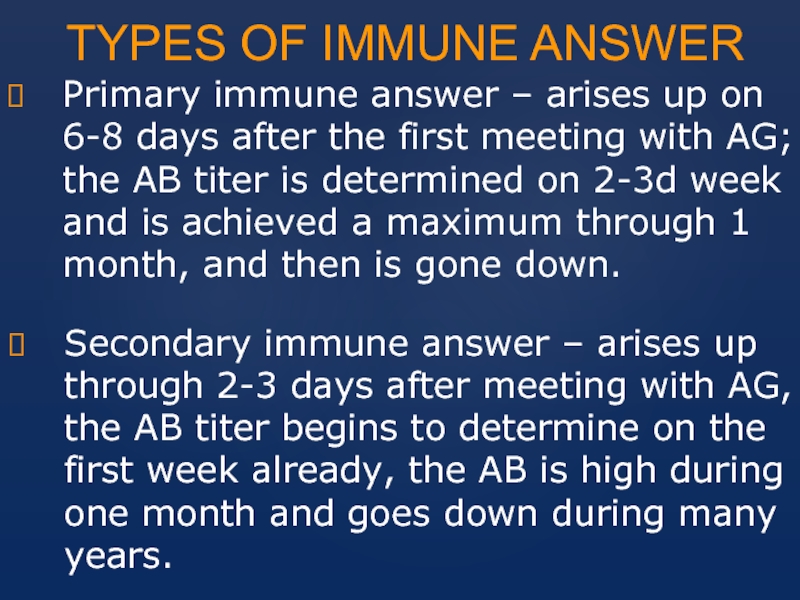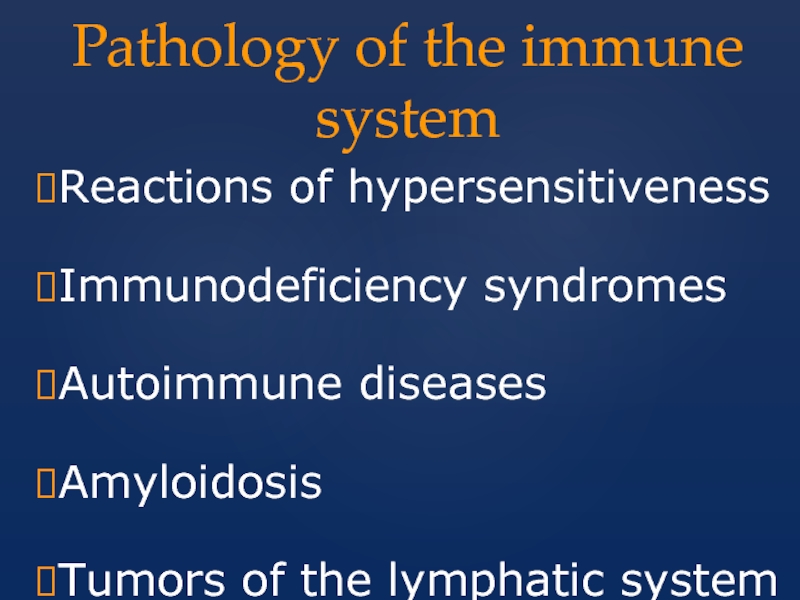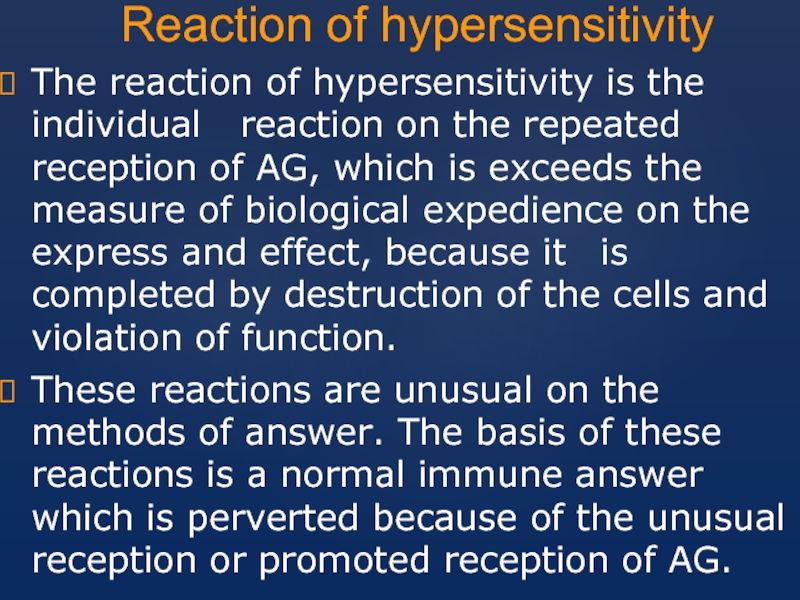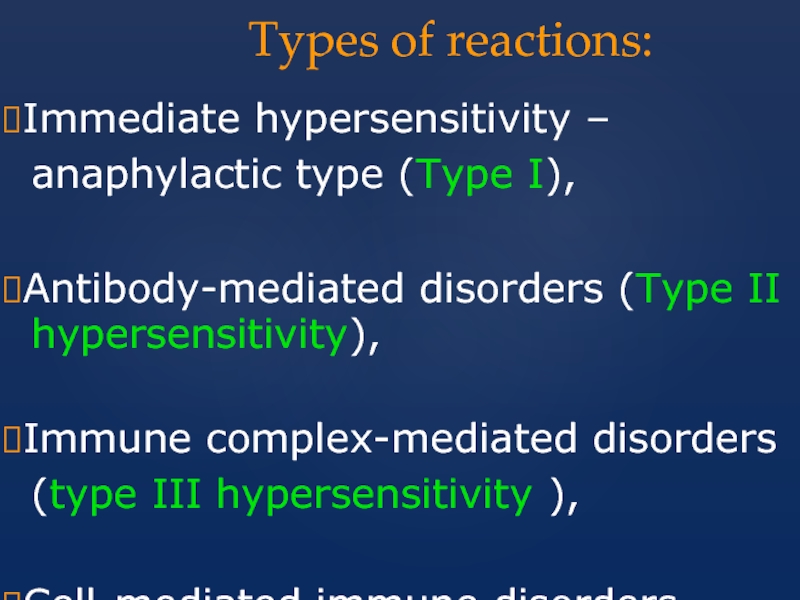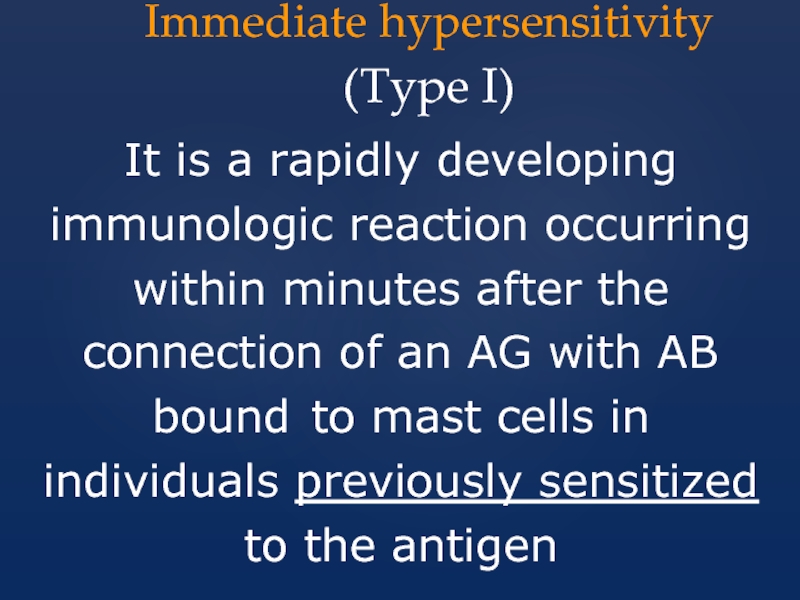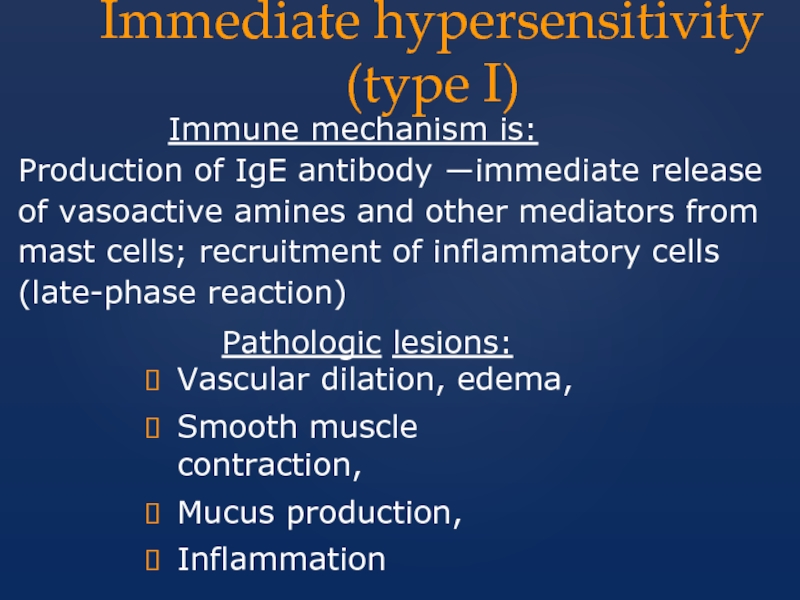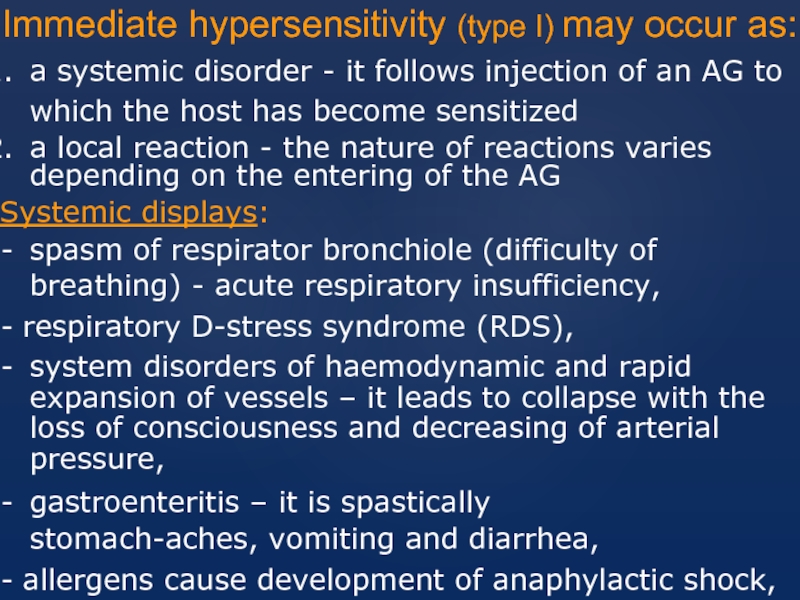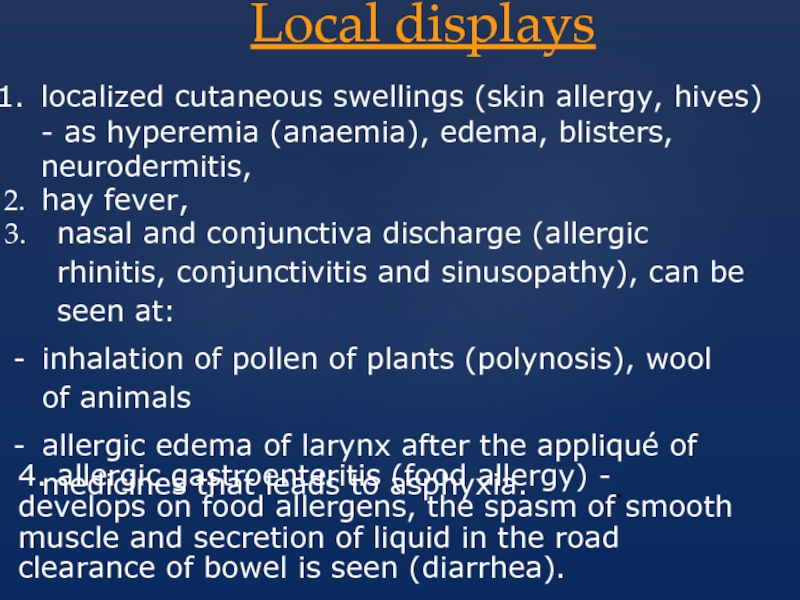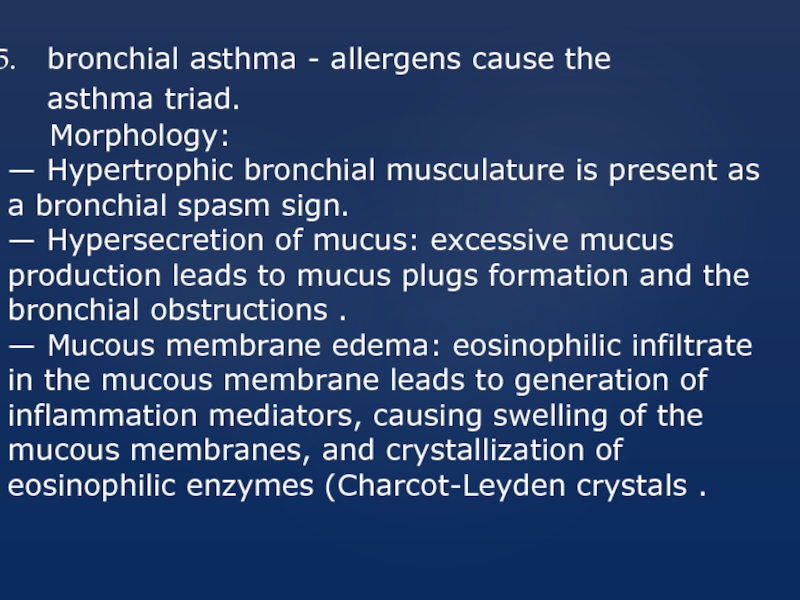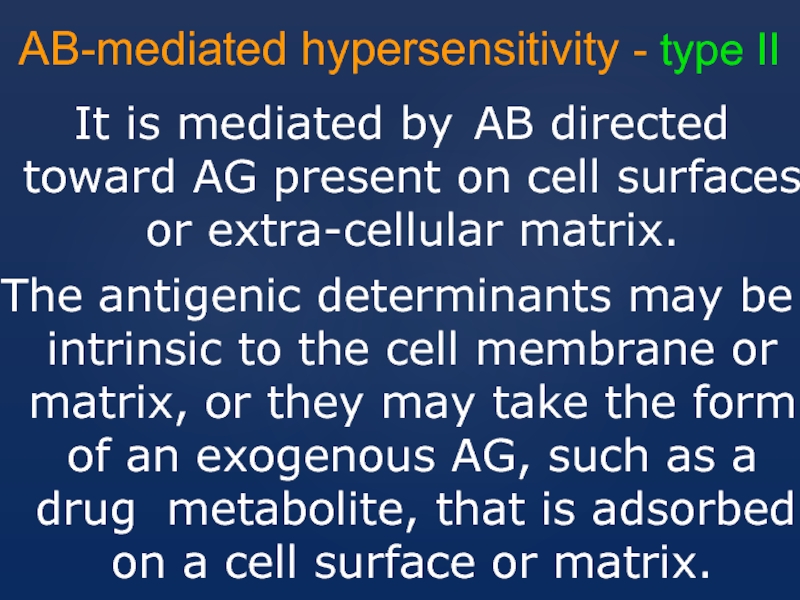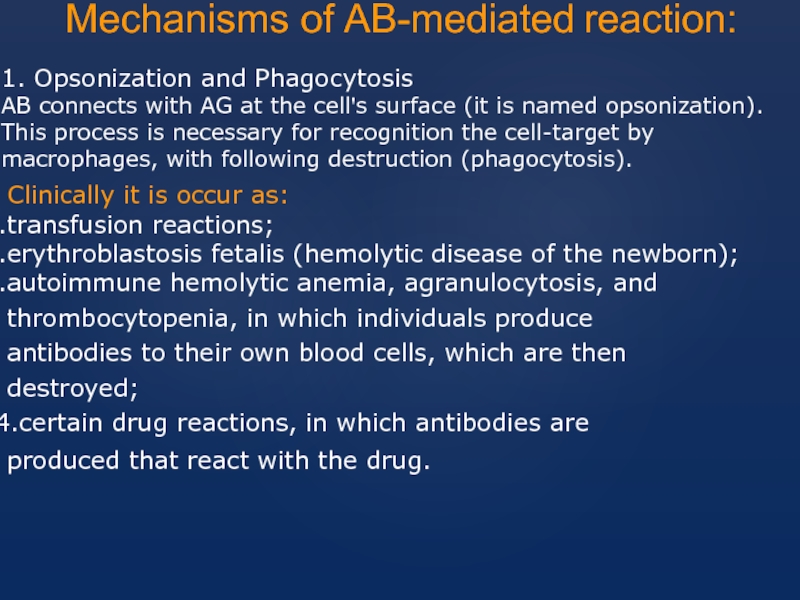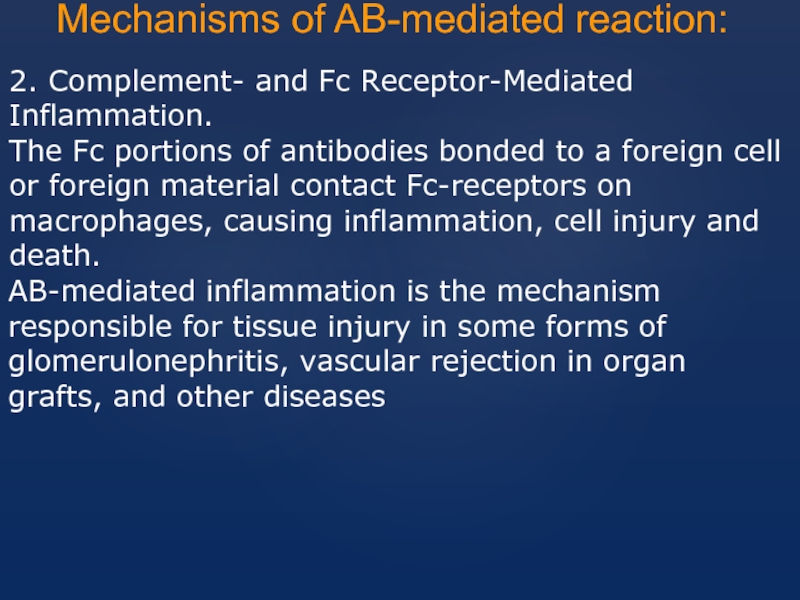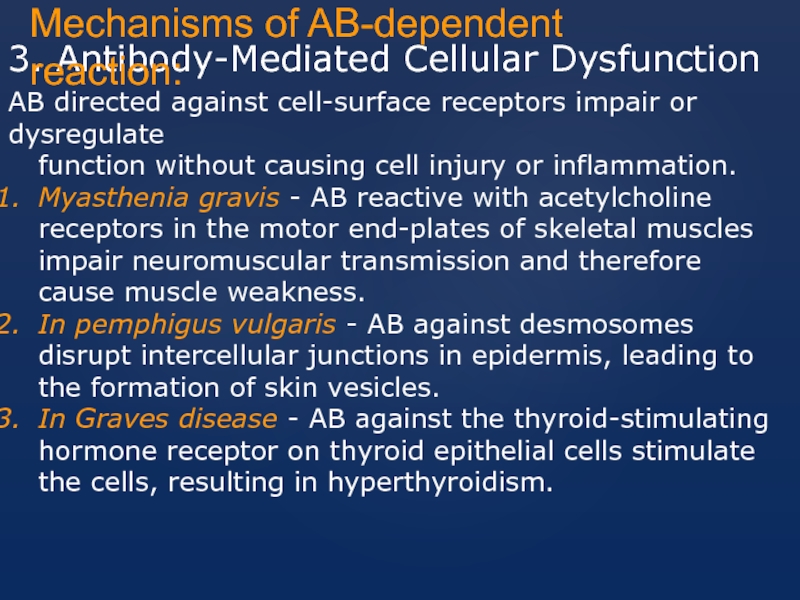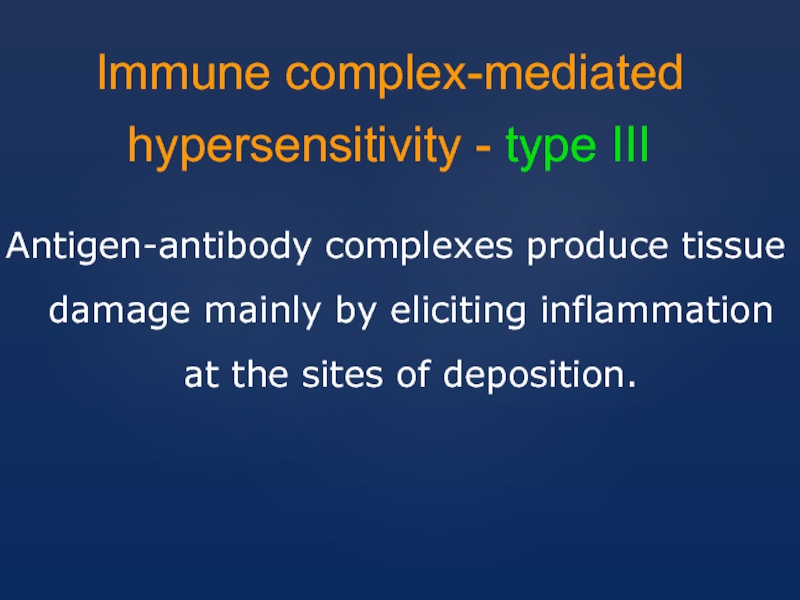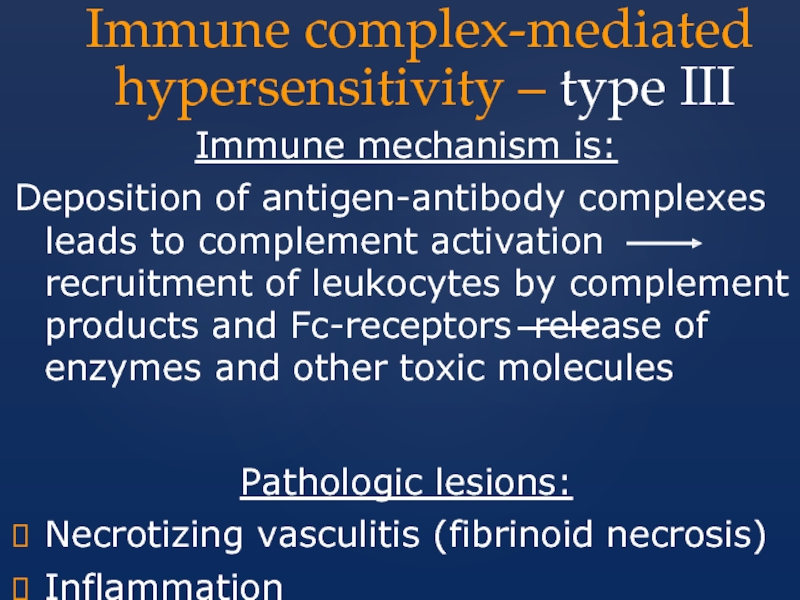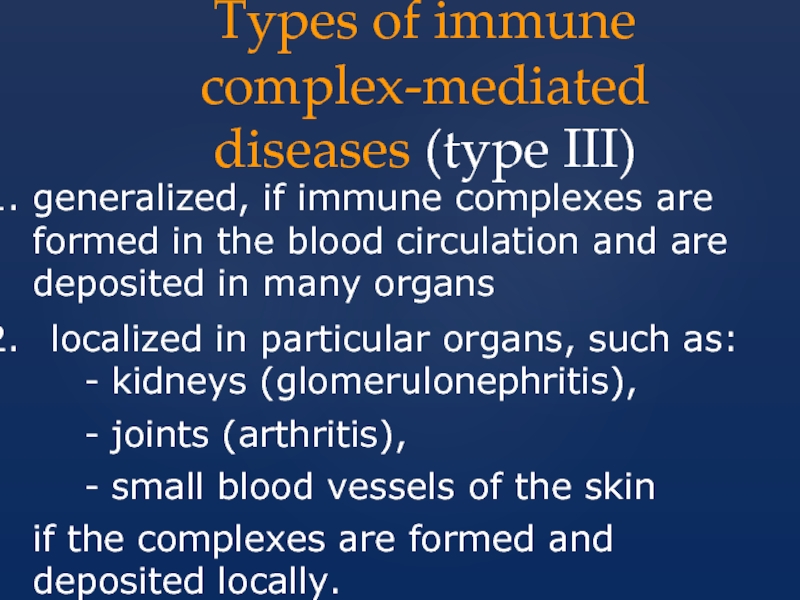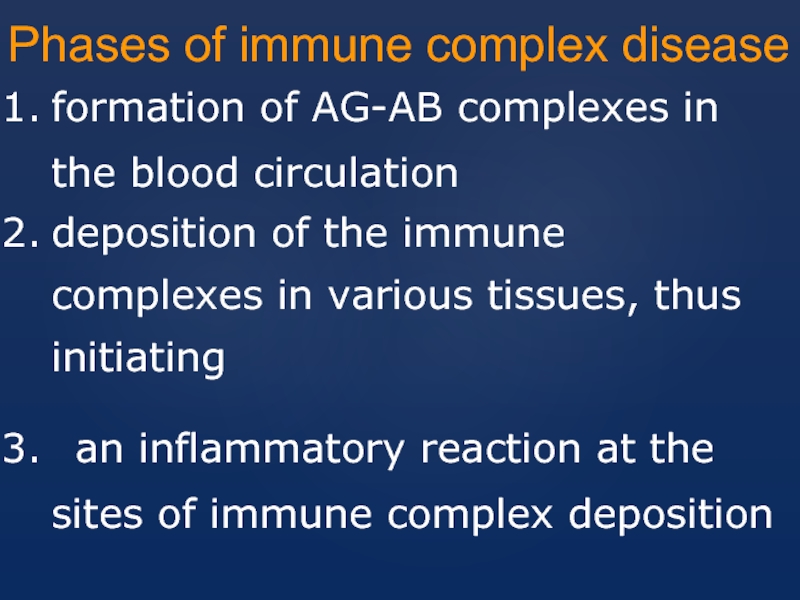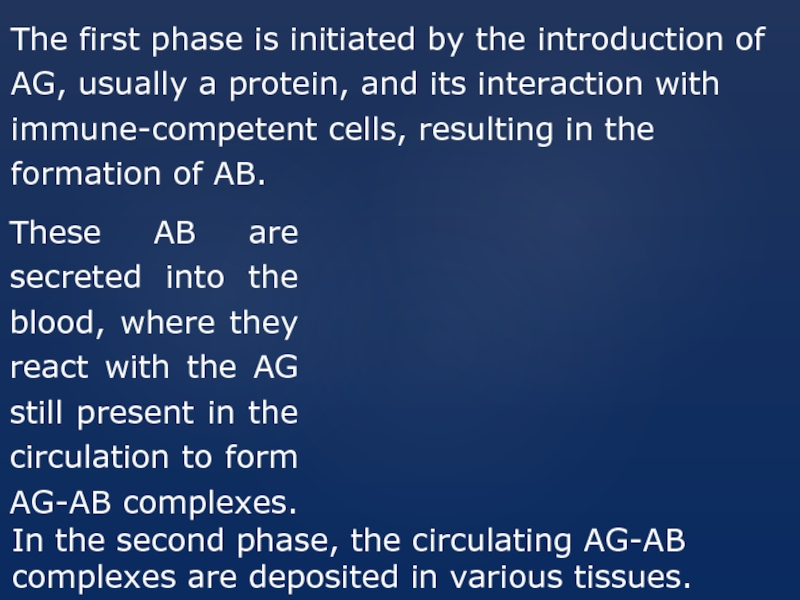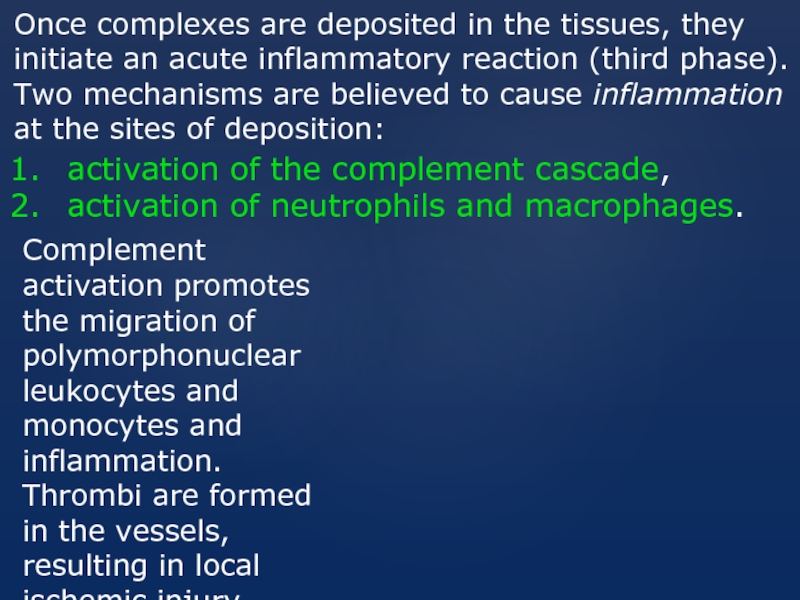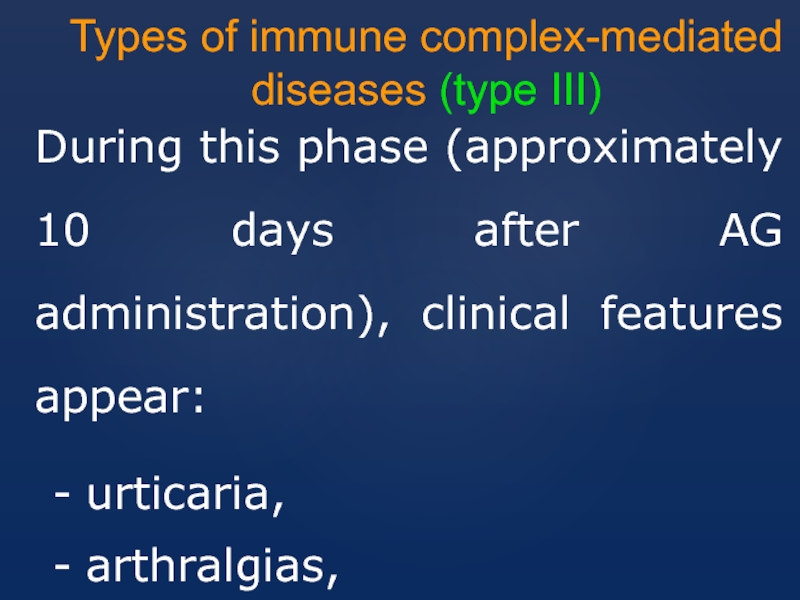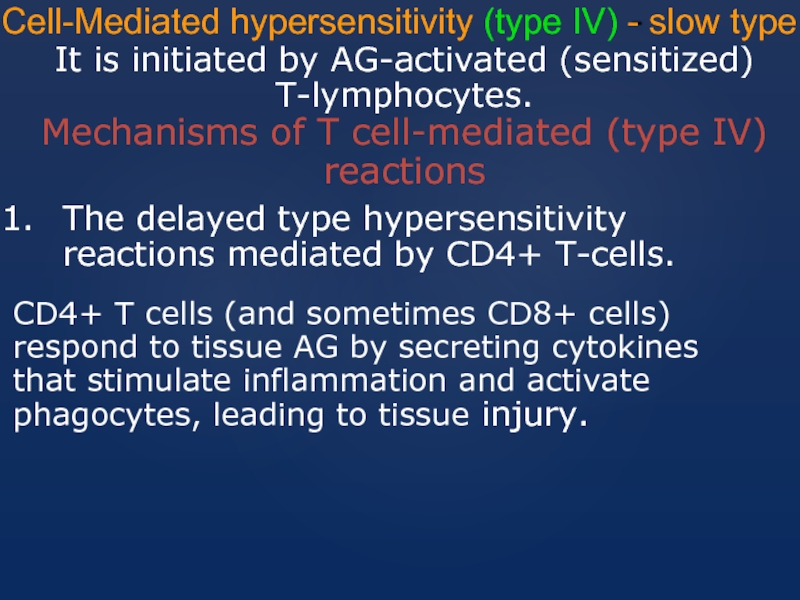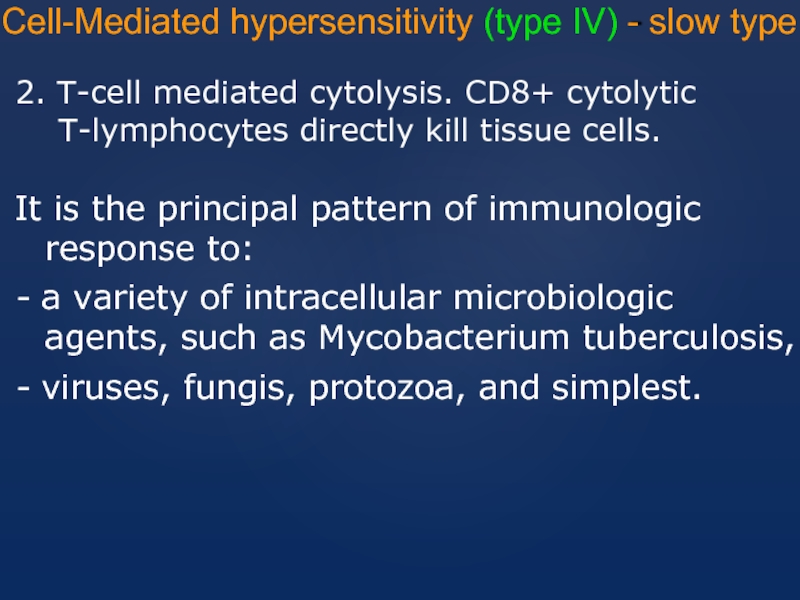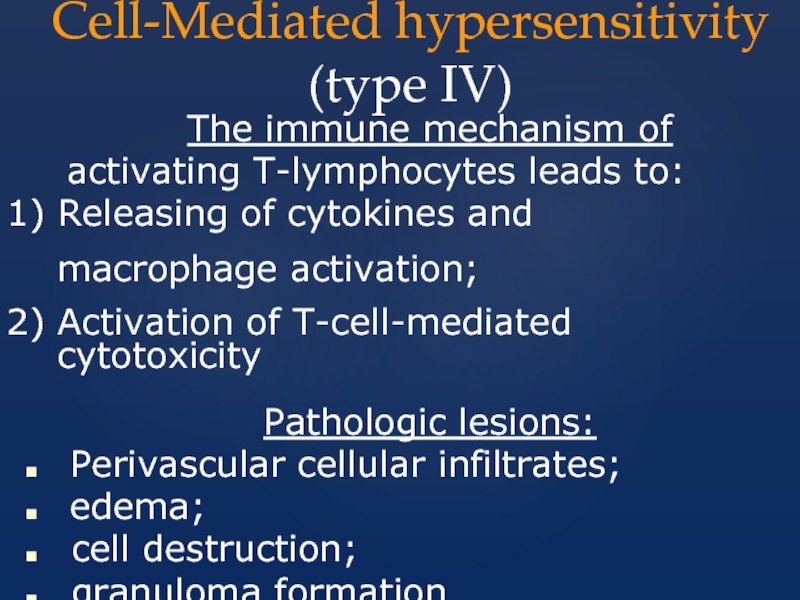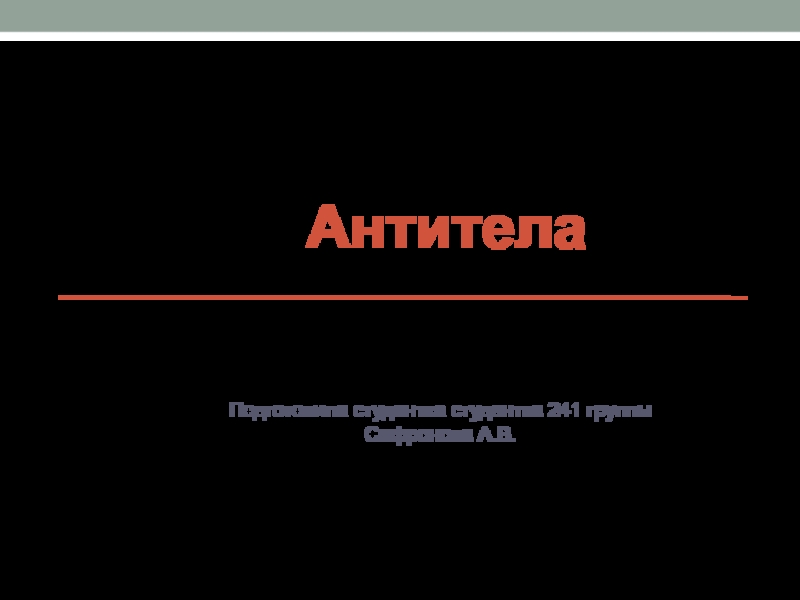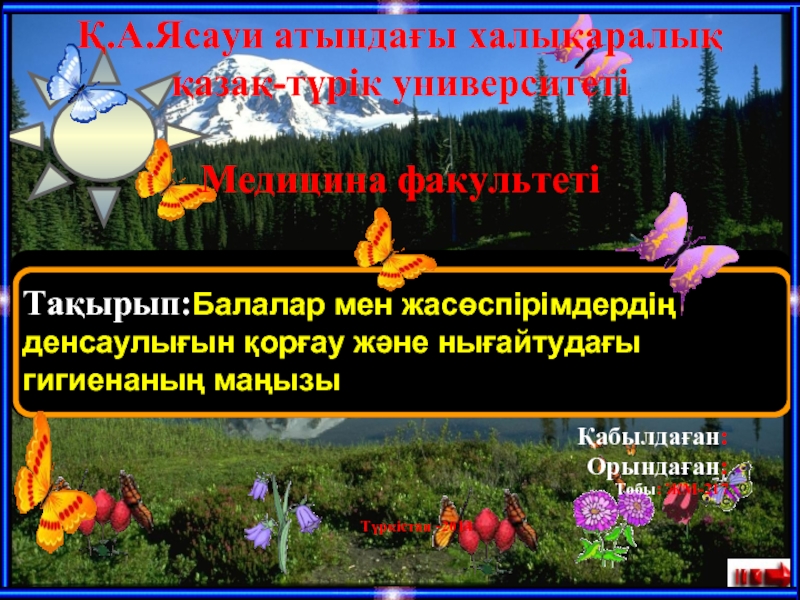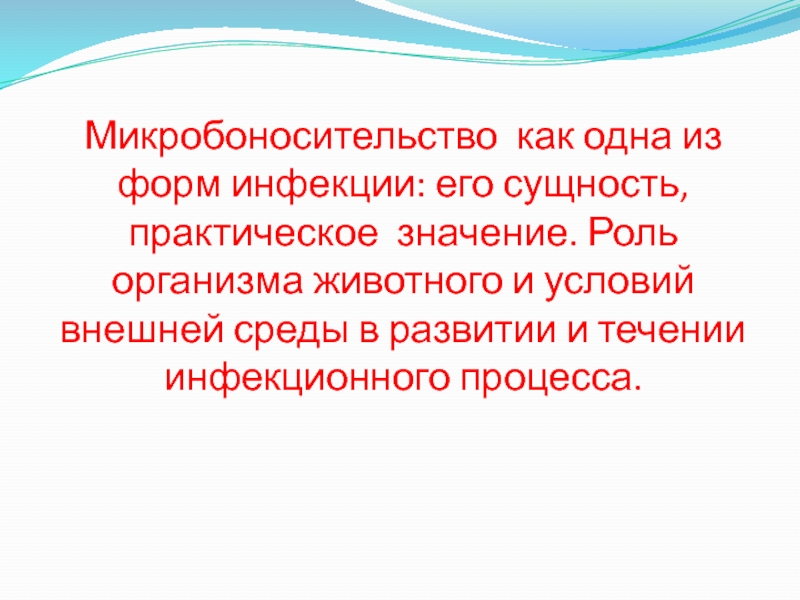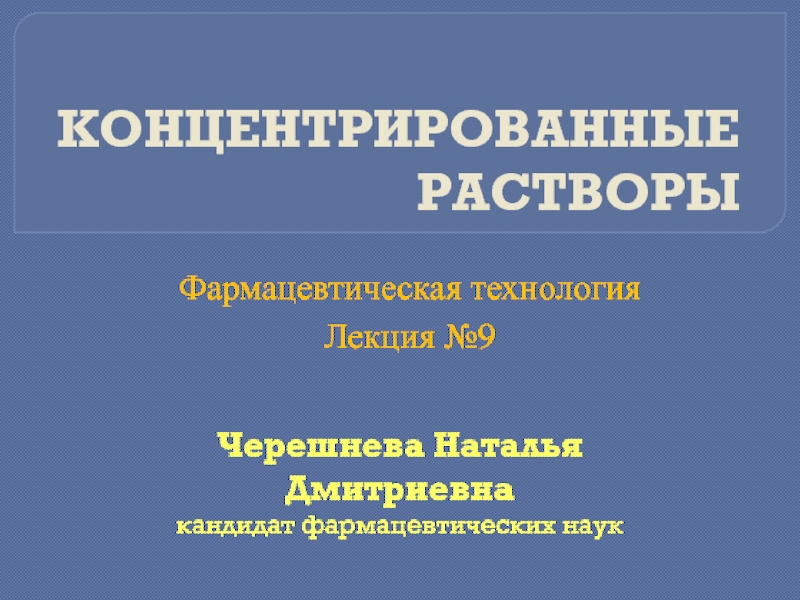- Главная
- Разное
- Дизайн
- Бизнес и предпринимательство
- Аналитика
- Образование
- Развлечения
- Красота и здоровье
- Финансы
- Государство
- Путешествия
- Спорт
- Недвижимость
- Армия
- Графика
- Культурология
- Еда и кулинария
- Лингвистика
- Английский язык
- Астрономия
- Алгебра
- Биология
- География
- Детские презентации
- Информатика
- История
- Литература
- Маркетинг
- Математика
- Медицина
- Менеджмент
- Музыка
- МХК
- Немецкий язык
- ОБЖ
- Обществознание
- Окружающий мир
- Педагогика
- Русский язык
- Технология
- Физика
- Философия
- Химия
- Шаблоны, картинки для презентаций
- Экология
- Экономика
- Юриспруденция
Pathology of immune system презентация
Содержание
- 1. Pathology of immune system
- 2. Functions of immune system
- 3. Organs of IS:
- 10. Immune mechanisms
- 11. Adaptive immunity
- 12. Adaptive immunity
- 13. TYPES OF IMMUNE
- 14. Pathology of the immune system
- 15. Reaction of hypersensitivity The reaction
- 16. Types of reactions:
- 17. Immediate hypersensitivity (Type I)
- 18. Immune mechanism is: Production of IgE
- 20. Local displays hay
- 21. bronchial asthma - allergens cause the
- 22. АB-mediated hypersensitivity
- 23. Mechanisms of AB-mediated reaction: 1. Opsonization and Phagocytosis
- 24. 2. Complement- and Fc Receptor-Mediated Inflammation.
- 25. 3. Antibody-Mediated Cellular Dysfunction Mechanisms
- 26. Immune complex-mediated hypersensitivity -
- 27. Immune complex-mediated hypersensitivity – type III
- 28. Types of immune complex-mediated diseases (type III)
- 29. Phases of immune complex disease
- 30. The first phase is initiated by the
- 31. Once complexes are deposited in the tissues,
- 32. Types of immune complex-mediated diseases (type
- 33. Cell-Mediated hypersensitivity (type
- 34. Cell-Mediated hypersensitivity (type
- 35. Cell-Mediated hypersensitivity (type IV)
Слайд 1
ZAPOROZHZHIAN STATE MEDICAL UNIVERSITY
The department of pathological anatomy and forensic medicine
Pathology of immune system
Lecture on pathological anatomy for the 3-rd year students
Слайд 2
Functions of immune system
1. To provide defense of organism from:
any infection,
cells-mutants,
tumor
transplanted cells,
any substances which are recognized
by IS as foreign.
2. Permanent control by lymphocytes of AG composition of own cells in accordance to the HLA type 1 or 2
Слайд 3Organs of IS:
Central organs:
bone marrow and thymus
There is a permanent rhythmic
Peripheral organs:
lymphatic nodules, spleen, mucosa-associated lymphoid tissue
Additional reproduction and AG-related differentiation of immune cells takes place there in reply on the AG-stimulation
Слайд 4
Bone marrow
1. Active (red) bone marrow consists of lymphopoetic cells, fatty
2. Yellow bone marrow can transform into red if it is necessary.
After 70 years old the atrophy of myeloid tissue is seen, it is consists of fatty tissue and fibrocytes.
Children have active marrow in the tubular bones, but after children became grown up it change into yellow.
Слайд 5
Thymus
3-types of Т-lymphocytes
are produced in Thymus:
Т-killer
Т-helper, NK-cells
T-suppressors - they stimulate
tolerance
It consists of 2 parts which are divided into lobules, each of which has a cortex and cerebral substance.
Слайд 6
LYMPHATIC NODULES
Control and AG recognition is provided in a lymph:
❑ Size of
❑ Lymphatic nodules
consists of: - cortex
- medullar substances
In cortex there are lymphatic follicles (primary and secondary – with the center of reproduction
–B-cells are formed there (B-zone)
In cerebral substances there are veins and lymphatic sinuses.
Слайд 7
SPLEEN
Control and the AG-recognition of blood. Every artery is surrounded by lymphatic
follicles.
mesenchymal tissue (there are B-lymphocytes)
Mass =150-180 gr.
A spleen can deposit up to the 2/3 of vein blood volume.
In pathology it is an organ of extra-medullar
blood-formation.
Слайд 8
(in the peribronchial fascial sheath);
— Exocrine glands (salivary glands and
— Mammary glands.
MALT
Mucosa-associated lymphoid tissue includes the following structures:
— Lymphatic pharyngeal ring with the pharyngeal, lingual, and palatine tonsils;
— Gut-associated lymphoid tissue (the follicles of the duodenum, appendix, colon);
— Bronchi-associated lymphoid tissue
Слайд 9
COMMON IMMUNE PROCESSES
Participants:
⮚immunocytes
(Т and B-lymphocytes,
monocytes, plasmocytes)
⮚attracted cells, not immune
⮚plasma-molecular elements
Слайд 10
Immune mechanisms
Innate immunity (natural, or native) refers to defense mechanisms that
2.Adaptive immunity (acquired, or specific) consists of mechanisms that are stimulated by microbes and are
capable of also recognizing non-microbial substances (AG). It consists of lymphocytes and their products, including AB.
Слайд 11Adaptive immunity
There are two main types:
cell-mediated (or cellular) immunity, which is
Performed by: - T-killer
NK-cells
macrophages
labrocytes
leucocytes (basophiles, neutrophils)
The result is formation of infiltrates and
granulomas, displays of immune cell killing
At final stage – phagocytosis and destruction of intracellular bacteria and viruses, fungi, tumor and transplanted cells
Слайд 12Adaptive immunity
2. Humoral immunity, which protects against extra-cellular microbes and their
and their secreted products.
Performed by: - B-lymphocytes,
that transformed into plasmocytes
and produce Ig M, G, I
activated complex of complement (C3 and C5)
At final stage: - lysis of bacterias and AG
opsonisation and phagocytosis of bacteria
destruction of immune complexes on basal membranes
neutralizations of exotoxins
agglutinization of blood cells
formation of normal immune complexes
Слайд 13
TYPES OF IMMUNE ANSWER
Primary immune answer – arises up on 6-8
Secondary immune answer – arises up through 2-3 days after meeting with AG, the AB titer begins to determine on the first week already, the AB is high during one month and goes down during many years.
Слайд 14
Pathology of the immune
system
⮚Reactions of hypersensitiveness
⮚Immunodeficiency syndromes
⮚Autoimmune diseases
⮚Amyloidosis
⮚Tumors of the lymphatic
Слайд 15Reaction of hypersensitivity
The reaction of hypersensitivity is the individual reaction on the
These reactions are unusual on the methods of answer. The basis of these reactions is a normal immune answer which is perverted because of the unusual reception or promoted reception of AG.
Слайд 16
Types of reactions:
⮚Immediate hypersensitivity –
anaphylactic type (Type I),
⮚Antibody-mediated disorders (Type II
⮚Immune complex-mediated disorders
(type III hypersensitivity ),
⮚Cell-mediated immune disorders - slow type (type IV hypersensitivity ).
Слайд 17
Immediate hypersensitivity
(Type I)
It is a rapidly developing immunologic reaction occurring within
Слайд 18Immune mechanism is: Production of IgE antibody ―immediate release of vasoactive
Immediate hypersensitivity (type I)
Pathologic lesions:
Vascular dilation, edema,
Smooth muscle contraction,
Mucus production,
Inflammation
Слайд 19
a systemic disorder - it follows injection of an AG to
which
a local reaction - the nature of reactions varies depending on the entering of the AG
Systemic displays:
spasm of respirator bronchiole (difficulty of
breathing) - acute respiratory insufficiency,
respiratory D-stress syndrome (RDS),
system disorders of haemodynamic and rapid expansion of vessels – it leads to collapse with the loss of consciousness and decreasing of arterial pressure,
gastroenteritis – it is spastically stomach-aches, vomiting and diarrhea,
allergens cause development of anaphylactic shock,
and medicinal allergens – anaphylactic reaction.
Immediate hypersensitivity (type I) may occur as:
Слайд 20
Local displays
hay fever,
localized cutaneous swellings (skin allergy, hives) - as hyperemia
nasal and conjunctiva discharge (allergic rhinitis, conjunctivitis and sinusopathy), can be seen at:
inhalation of pollen of plants (polynosis), wool of animals
allergic edema of larynx after the appliqué of medicines that leads to asphyxia.
4. allergic gastroenteritis (food allergy) - develops on food allergens, the spasm of smooth muscle and secretion of liquid in the road clearance of bowel is seen (diarrhea).
Слайд 21
bronchial asthma - allergens cause the asthma triad.
Morphology:
— Hypertrophic
— Hypersecretion of mucus: excessive mucus production leads to mucus plugs formation and the bronchial obstructions .
— Mucous membrane edema: eosinophilic infiltrate in the mucous membrane leads to generation of inflammation mediators, causing swelling of the mucous membranes, and crystallization of eosinophilic enzymes (Charcot-Leyden crystals .
Слайд 22
АB-mediated hypersensitivity - type II
It is mediated by AB directed
toward AG present
or extra-cellular matrix.
The antigenic determinants may be intrinsic to the cell membrane or
matrix, or they may take the form of an exogenous AG, such as a drug metabolite, that is adsorbed
on a cell surface or matrix.
Слайд 23
Mechanisms of AB-mediated reaction:
1. Opsonization and Phagocytosis
AB connects with AG at the cellꞌs
Clinically it is occur as:
transfusion reactions;
erythroblastosis fetalis (hemolytic disease of the newborn);
autoimmune hemolytic anemia, agranulocytosis, and thrombocytopenia, in which individuals produce
antibodies to their own blood cells, which are then destroyed;
certain drug reactions, in which antibodies are
produced that react with the drug.
Слайд 24
2. Complement- and Fc Receptor-Mediated Inflammation.
The Fc portions of antibodies bonded
Mechanisms of AB-mediated reaction:
AB-mediated inflammation is the mechanism responsible for tissue injury in some forms of glomerulonephritis, vascular rejection in organ grafts, and other diseases
Слайд 25
3. Antibody-Mediated Cellular Dysfunction
Mechanisms of AB-dependent reaction:
AB directed against cell-surface receptors impair
function without causing cell injury or inflammation.
Myasthenia gravis - AB reactive with acetylcholine receptors in the motor end-plates of skeletal muscles impair neuromuscular transmission and therefore cause muscle weakness.
In pemphigus vulgaris - AB against desmosomes disrupt intercellular junctions in epidermis, leading to the formation of skin vesicles.
In Graves disease - AB against the thyroid-stimulating hormone receptor on thyroid epithelial cells stimulate the cells, resulting in hyperthyroidism.
Слайд 26
Immune complex-mediated
hypersensitivity - type III
Antigen-antibody complexes produce tissue damage mainly by
Слайд 27
Immune complex-mediated hypersensitivity – type III
Immune mechanism is:
Deposition of antigen-antibody complexes
Pathologic lesions:
Necrotizing vasculitis (fibrinoid necrosis)
Inflammation
Слайд 28Types of immune complex-mediated
diseases (type III)
generalized, if immune complexes are formed
localized in particular organs, such as:
kidneys (glomerulonephritis),
joints (arthritis),
small blood vessels of the skin
if the complexes are formed and
deposited locally.
Слайд 29
Phases of immune complex disease
formation of AG-AB complexes in
the blood circulation
deposition
an inflammatory reaction at the
sites of immune complex deposition
Слайд 30The first phase is initiated by the introduction of AG, usually
These AB are secreted into the blood, where they react with the AG still present in the circulation to form AG-AB complexes.
In the second phase, the circulating AG-AB
complexes are deposited in various tissues.
Слайд 31Once complexes are deposited in the tissues, they initiate an acute
activation of the complement cascade,
activation of neutrophils and macrophages.
Complement
activation promotes the migration of polymorphonuclear leukocytes and
monocytes and inflammation. Thrombi are formed in the vessels, resulting in local ischemic injury.
Слайд 32
Types of immune complex-mediated
diseases (type III)
During this phase (approximately 10 days
urticaria,
arthralgias,
lymph node enlargement,
proteinuria.
Слайд 33
Cell-Mediated hypersensitivity (type IV) - slow type
It is initiated by AG-activated
Mechanisms of T cell-mediated (type IV) reactions
The delayed type hypersensitivity reactions mediated by CD4+ T-cells.
CD4+ T cells (and sometimes CD8+ cells) respond to tissue AG by secreting cytokines that stimulate inflammation and activate phagocytes, leading to tissue injury.
Слайд 34
Cell-Mediated hypersensitivity (type IV) - slow type
It is the principal pattern
a variety of intracellular microbiologic
agents, such as Mycobacterium tuberculosis,
viruses, fungis, protozoa, and simplest.
2. T-cell mediated cytolysis. CD8+ cytolytic
T-lymphocytes directly kill tissue cells.
Слайд 35
Cell-Mediated hypersensitivity (type IV)
The immune mechanism of
activating T-lymphocytes leads to:
Releasing of
macrophage activation;
Activation of T-cell-mediated cytotoxicity
Pathologic lesions:
Perivascular cellular infiltrates;
edema;
cell destruction;
granuloma formation
